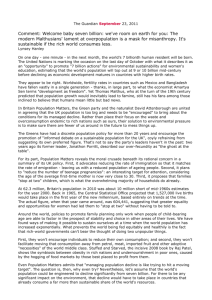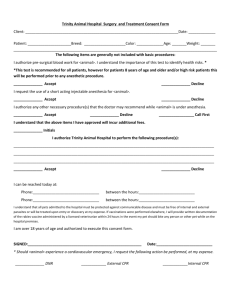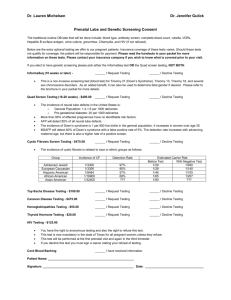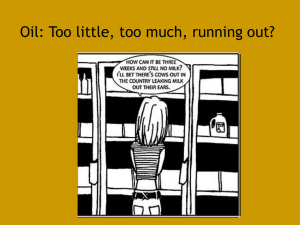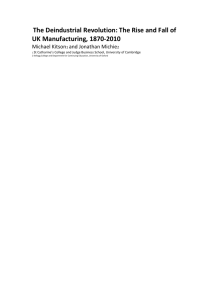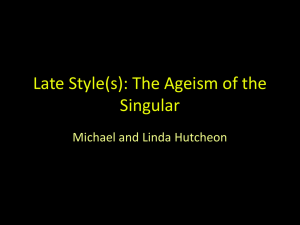(White throated snapping turtle) listing consultation questions
advertisement
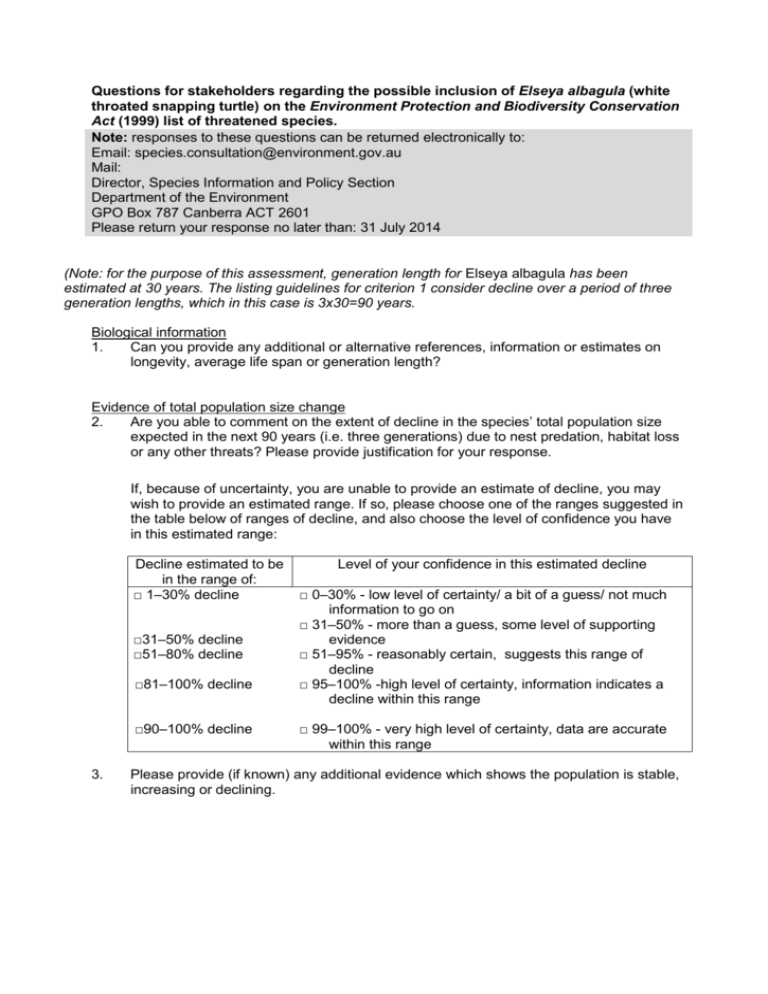
Questions for stakeholders regarding the possible inclusion of Elseya albagula (white throated snapping turtle) on the Environment Protection and Biodiversity Conservation Act (1999) list of threatened species. Note: responses to these questions can be returned electronically to: Email: species.consultation@environment.gov.au Mail: Director, Species Information and Policy Section Department of the Environment GPO Box 787 Canberra ACT 2601 Please return your response no later than: 31 July 2014 (Note: for the purpose of this assessment, generation length for Elseya albagula has been estimated at 30 years. The listing guidelines for criterion 1 consider decline over a period of three generation lengths, which in this case is 3x30=90 years. Biological information 1. Can you provide any additional or alternative references, information or estimates on longevity, average life span or generation length? Evidence of total population size change 2. Are you able to comment on the extent of decline in the species’ total population size expected in the next 90 years (i.e. three generations) due to nest predation, habitat loss or any other threats? Please provide justification for your response. If, because of uncertainty, you are unable to provide an estimate of decline, you may wish to provide an estimated range. If so, please choose one of the ranges suggested in the table below of ranges of decline, and also choose the level of confidence you have in this estimated range: Decline estimated to be in the range of: □ 1–30% decline □31–50% decline □51–80% decline □81–100% decline □90–100% decline 3. Level of your confidence in this estimated decline □ 0–30% - low level of certainty/ a bit of a guess/ not much information to go on □ 31–50% - more than a guess, some level of supporting evidence □ 51–95% - reasonably certain, suggests this range of decline □ 95–100% -high level of certainty, information indicates a decline within this range □ 99–100% - very high level of certainty, data are accurate within this range Please provide (if known) any additional evidence which shows the population is stable, increasing or declining. Current Distribution/range/extent of occurrence, area of occupancy 4. Do you consider that the way the current area of occupancy has been estimated is appropriate? Please provide justification for your response. Can you provide an estimate (or if you disagree with the estimate provided, an alternative estimate) of the area of occupancy? If, because of uncertainty, you are unable to provide an estimate of area of occupancy, you may wish to provide an estimated range. If so, please choose one of the ranges suggested in the table below of ranges of area of occupancy, and also choose the level of confidence you have in this estimated range: Area of occupancy is Level of your confidence in this estimated area of occupancy estimated to be in the range of: □ <10 km2 □ 0–30% - low level of certainty/ a bit of a guess/ not much data to go on □ 31–50% - more than a guess, some level of supporting □ 11 – 500 km2 evidence □ 501 – 2000 km2 □ 51–95% - reasonably certain, data suggests this range of decline 2 □ >2000 km □ 95–100% -high level of certainty, data indicates a decline within this range □ 99–100% - very high level of certainty, data is accurate within this range Change in status/rate of change 5. Is the information used to identify the nationally threatened status of the species robust? Have all the underlying assumptions been made explicit? Please provide justification for your response. 6. Does the current and predicted rate of decline seem reasonable? Do you consider that the way this has been derived is appropriate? If not, please provide justification of your response. General 7. What are your views on whether the species is eligible for inclusion in the critically endangered category of the threatened species list? 8. Can you provide additional data or information relevant to this assessment? 9. Have you been involved in developing this nomination? Threats 10. Do you agree that the threats listed are correct and that their effect on the species is significant? 11. To what degree are the identified threats likely to impact on the species in the future? 12. Can you provide additional or alternative information on threats, past, current or potential that may adversely affect this species at any stage of its life cycle? 13. Can you provide supporting data/justification or other information for your responses to these questions about threats? 2 Management 14. What planning, management and recovery actions are currently in place supporting protection and recovery of the species? To what extent have they been effective? 15. Can you recommend any additional or alternative specific threat abatement or conservation actions that would aid the protection and recovery of the species? 16. What individuals or organisations are currently, or potentially could be, involved in management and recovery of the species? 17. What threats are impacting on different populations, how variable are the threats and what is the relative importance of the different populations? Please provide evidence and background information. 3
